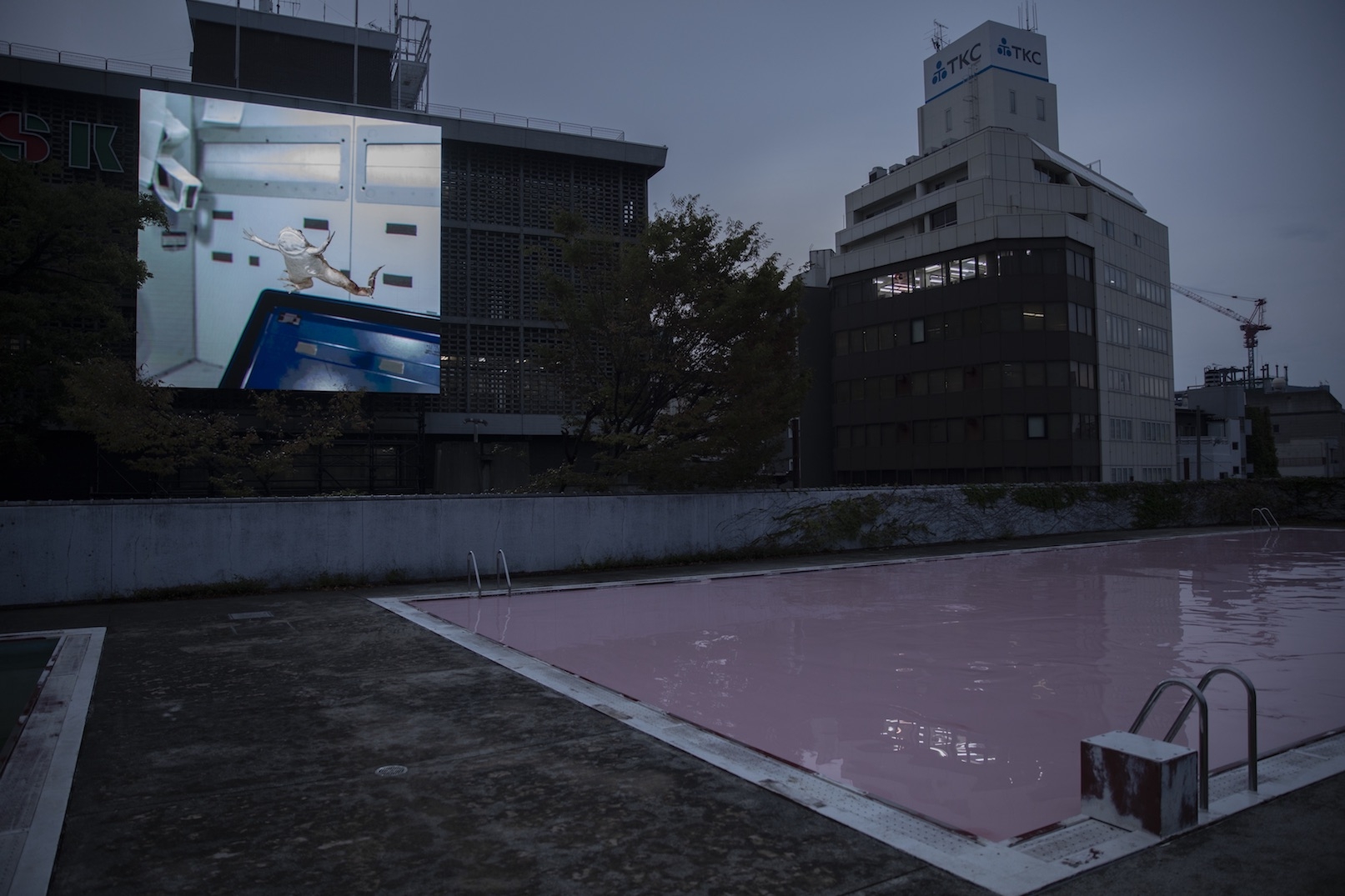Almost every art festival in Japan is tasked with revivifying the local landscape, but the second edition of the triennial Okayama Art Summit, curated by French artist Pierre Huyghe and titled IF THE SNAKE, aims at replacing the historic geography of old Okayama with links to the spaces of fiction and technology. At the opening, Huyghe spoke softly of wanting to augment visitors’ experiences and have them feel like witnesses not spectators, connected and transformed by the works they encounter.
Among the works by 17 artists and collectives, Mika Tajima’s New Humans (2019) at the Tenjinyama Cultural Plaza embodies the vague identities of social media. A black ferrofluid pool installed in the floor morphs into a waving grid as viewers wander past, catching their reflection in the patterns shaped by data gathered from online profiles. This magnetic primordial soup, like other installations in the exhibition, is constantly generating new forms.
Rather than draw you into the exhibition, promising enlightenment, IF THE SNAKE challenges your reasons for being there in the first place. The digital voice of Huyghe’s animated fictional character Annlee drifts through the Hayashibara Museum of Art from the short video Two Minutes Out of Time (2000), spelling out this challenge in no uncertain terms: “I’m haunted by your imagination, and that’s what I want from you. See, I’m not here for your amusement. You are here for mine!”
Also featuring a fictional female protago- nist, Fabien Giraud & Raphaël Siboni’s mixed- media installation The Form of Not (Infantia), The Unmanned, Season 3 (2019), located at the former Uchisange elementary school, imagines this figure from the future through an arrangement of found objects that tell the story of her origin. The narrative is also delivered by the looping video The Everted Capital (1971–4936) (2019), which is edited in real time using artificial intelligence. The work employs machine learning to generate a deepfake clip of Richard Nixon lip-synced to a Japanese woman’s voice. The timeline of the installation’s narrative, which jumps back and forth between historical events and a world that does not yet exist, presents an uncanny collision of past, present and future.
Elsewhere on the same site, Pamela Rosenkranz’s Skin Pool (Oromom) (2019) fills the outdoor swimming pool with pink dye and thickener. Over it looms a giant led screen showing John Gerrard’s self-perpetuating computer simulation and sci-fi cinema mash-up X. laevis (Spacelab) (2017), which also uses machine-learning technology to depict a frog suspended in zero gravity. Etienne Chambaud’s bronze plinth Calculus (2019) recreates Auguste Rodin’s The Thinker (1903) minus the figure, and surrounds it with a sand dune. Beyond the treeline, Rosenkranz’s robotic snake Healer (Waters) (2019) independently navigates its surroundings using sensory technology developed for search-and-rescue apparatus. It is, for the time being, confined to the school’s sumo dohyō ring.
In the nearby gymnasium, Fernando Ortega’s Untitled (Fly Electrocutor) (2003) causes lights inside to briefly black out each time a fly strikes the device hanging from the ceiling. It is surprising how rarely this happens given the heat and humidity, but when it does, the effect is profound. Such use of serendipity, weather and drama recalls The Play, the elusive Japanese collective who, during the 1970s and 80s, waited endlessly on lightning to charge their own work. Carefully arranged on the floor below Ortega’s fly zapper, Tarek Atoui’s Bitter Beats and Wild Synths / the wave (2019) produces a synchronised wall of sound from nine separate instruments made by musicians from around the world. Each consists of stone, bone, a mixture of electronics and percussion; their combined sound slowly building until the largest piece – Horns of Putin (2014–19) – blows and calls every instrument to order.
Back in the Hayashibara Museum of Art, Tino Sehgal’s performance Ann Lee (2019) casts a real Japanese girl as the digital Annlee from Two Minutes Out of Time (2000). The performer drifts into the space before describing the shock of seeing another young girl in a painting that remains nameless. The intensity swells when suddenly she breaks the fourth wall and asks the small assembled crowd to name their favourite artwork: spiked by fear, embarrassment and surprise, few of us respond.
IF THE SNAKE is less interested in ‘being’ and more preoccupied with ‘becoming’, and so Huyghe engineers a fiction that confuses the space between the work of art and the city where it occurs. When artworks are able to self-generate, do humans become obsolete by their own design? Stare into the abyss of Tajima’s New Humans and the abyss will stare back.
Okayama Art Summit 2019: IF THE SNAKE Various venues, Okayama, through 24 November
From the Winter 2019 issue of ArtReview Asia
